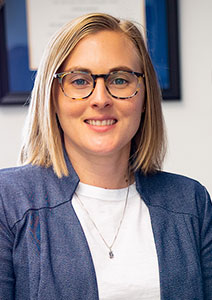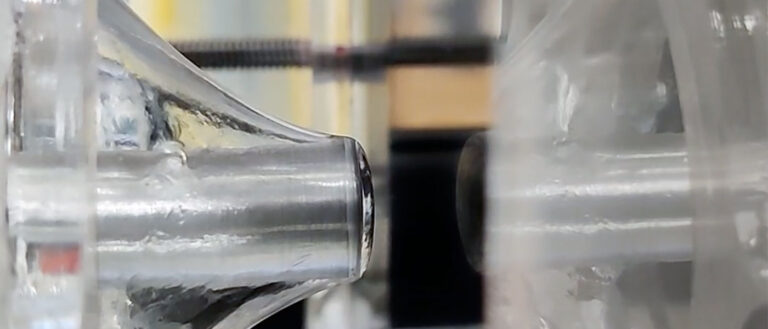Case Western Reserve researcher, collaborator at University of California-Santa Cruz to study role of nutrients in ovarian cancer cells
Case Western Reserve University scientist Lydia Kisley, the Warren E. Rupp Assistant Professor in physics at the College of Arts and Sciences, and a collaborator from the University of California-Santa Cruz (USSC) plan to gain a brand-new view inside and around ovarian cancer cells by elongating and enlarging the cell structures on an elastic surface.
Kisley and Laura Sanchez, an associate professor of chemistry and biochemistry at the USSC, will share a three-year, $1.25 million grant from the Paul G. Allen Family Foundation as recommended by The Paul G. Allen Frontiers Group, a division of the Allen Institute, for the research.
The scientists plan to use their new method, called expansion mass spectrometry, to study nutrients in and around ovarian cancer cells, an area where Sanchez conducts research. They hope to better understand the cells’ metabolism and how their local environments influence nutrient location and amounts.

‘Silly putty’ expansion and nutrient sensing
“Remember ‘Silly Putty?’ The material we use to stretch the cells is kind of like that,” said Kisley, referring to the children’s stretchy material invented in 1943 and now owned by Crayola. “We’ll throw some cells on there, give them some food so they are growing and happy and stretch them out.
“They could explode or go everywhere, but our preliminary results show that they move away from each other, and we can examine them more closely,” Kisley added.
She said one key advantage of stretching the cell–using a device she and her students built at Sears think[box], Case Western Reserve’s seven-story makerspace and innovation center—is it can provide greater detail simply and inexpensively.
“Right now, the technology to do this can cost millions of dollars—to be able to effectively see with enough resolution,” she said. “So we thought: ‘If we can’t make the image at a high enough resolution, let’s make the sample bigger’—so we stretch it.”
Kisley and Sanchez will do research considered “nutrient sensing,” meaning they are developing new technologies to measure or visualize nutrient levels within cells.
This work addresses a key need in the field. That area is the ability to capture detailed information about metabolites, chemical compounds and other nutrients living inside individual cells. These new techniques could propel understanding of the basic biology of cells as well as how metabolism or nutrition processing goes wrong in diseases like diabetes or malnutrition.
“Right now, there’s no good way to measure the distribution of nutrients inside individual cells,” Kisley said. “And nutrients are understudied, in part because they are really small. We hear about glucose sensing when it comes to diabetes, but not much beyond that. We’ll be able to look at not only glucose, but thousands of small molecules at once.”
Eight projects funded at $10 million
Officials announced the research funding as part of The Paul G. Allen Frontiers Group’s “Ask Anything, Change Everything,” initiative, Thursday, Dec. 15. They awarded it as part of a $10 million commitment to eight projects and 16 researchers. They said it would “support cutting-edge, early-stage projects that promise to advance the fields of biology and medicine,” according to a news release.
The late philanthropist Paul G. Allen launched The Allen Distinguished Investigator program in 2010 . Since then, program officials appointed a total of 130 Allen Distinguished Investigators.
Other award winners in the current round of funding hail from Boston College, the University of Texas at Austin, the European Molecular Biology Laboratory and more.
For more information, contact Mike Scott at mike.scott@case.edu.
This article was originally published Dec. 15, 2022.

